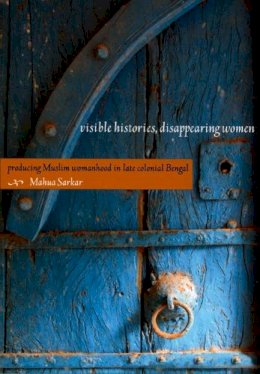
Visible Histories, Disappearing Women: Producing Muslim Womanhood in Late Colonial Bengal
Mahua Sarkar
Drawing on extensive archival research and oral histories of Muslim women who lived in Calcutta and Dhaka in the first half of the twentieth century, Sarkar traces Muslim women as they surface and disappear in colonial, Hindu nationalist, and liberal Muslim writings, as well as in the memories of Muslim women themselves. The oral accounts provide both a rich source of information about the social fabric of urban Bengal during the final years of colonial rule and a glimpse of the kind of negotiations with stereotypes that even relatively privileged, middle-class Muslim women are still frequently obliged to make in India today. Sarkar concludes with some reflections on the complex links between past constructions of Muslim women, current representations, and the violence against them in contemporary India.
Product Details
About Mahua Sarkar
Reviews for Visible Histories, Disappearing Women: Producing Muslim Womanhood in Late Colonial Bengal
Rochona Majumdar
Economic and Political Weekly
“By engaging with existing scholarship, Sarkar draws eclectically on a range of disciplines: sociology, anthropology, history, feminist and gender studies. The book represents historical sociology at its cutting edge by bringing intellectual history into the post-colonial present.”
Durba Ghosh
Social History
“Mahua Sarkar’s . . . original and stimulating study. . . . Sarkar also seeks to enlarge notions of women’s ‘agency’ beyond those privileged by liberal feminists.”
Barbara D. Metcalf
Journal of Women's History
“Seeking to correct erstwhile celebratory representations of Muslim women, Visible Histories neither extols the virtues of Muslim womanhood in the late colonial period of Bengal, nor does it seek to redress for their untold stories. Visible Histories’ contribution to colonial historiography is more nuanced.”
Anita Anantharam
Journal of Colonialism & Colonial History
